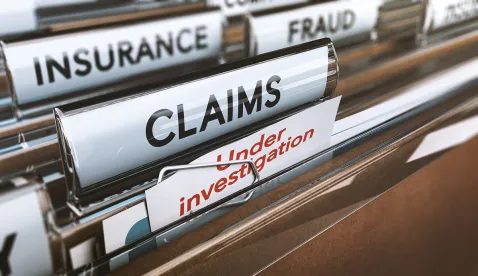Everest National Insurance Company has filed a lawsuit denying any obligation to cover a post-acquisition lawsuit by a credit union alleging fraud against two banks and their executives. The seller paid additional premium for an extended reporting period to report claims based on pre-acquisition wrongful conduct, but the insurer denied coverage on the ground that any claims asserted by the buyer are excluded under the D&O policy’s “insured vs. insured” exclusion. The decision underscores the importance of not only ensuring continuity of D&O coverage before and after a transaction but also evaluating all possible claim scenarios arising out of a deal to ensure that all stakeholders are adequately protected.
Background
In 2019, Verve, a credit union, entered into a purchase agreement with South Central Bank (SCB), a nationally chartered bank, and its parent company, First Business Bancorp. Under the agreement, Verge agreed to purchase substantially all assets of SCB. Following the sale, however, Verve claimed that it discovered significant accounting irregularities that it believed were concealed or otherwise misrepresented by SCB and First Business Bancorp.
Verve filed a lawsuit against SCB and First Business Bancorp, as well as three current and former officers and directors of SCB. The Verve lawsuit sought to recover more than $1 million in damages due to alleged fraudulent accounting practices, fraudulent misrepresentations, and fraudulent concealment of facts that induced Verve to enter into the purchase agreement under false pretenses.
The defendants gave notice of the Verve lawsuit under a directors and officers liability policy issued by Everest to First Business Bancorp. Verve’s acquisition of substantially all of SCB’s assets automatically terminated future coverage under the policy, but First Business Bancorp and SCB purchased an “Extended Reporting Period Activation” endorsement, which provided an additional five-year reporting period for post-acquisition claims alleging wrongful acts occurring prior to the effective date of the endorsement.
First Business Bancorp and SCB sought coverage under the extended reporting endorsement they purchased to protect the insureds for post-acquisition claims, which was the subject of Everest’s declaratory judgment lawsuit.
Everest’s Coverage Action
Upon concluding there was no coverage under the policy, Everest filed a declaratory judgment lawsuit seeking a declaration that it had no obligation to provide coverage for the Verve lawsuit. Everest disputed any duty to defend under the policy and argued that there was no coverage under the policy’s “insured vs. insured” exclusion, which barred coverage for claims by any “Company” or “Insured Person” in any capacity against another insured, like SCB or First Business Bancorp.
The insurer argued that Verve satisfied the definition of “Company,” as amended by the extended reporting endorsement, because the endorsement modified the definition to include an “acquiring entity” of any “Subsidiary” created or acquired during the policy period or as of the inception date of the endorsement. Based on Verve’s acquisition of substantially all of the assets of SCB, Everest argued, the Verve lawsuit constituted a claim brought by the “Company” (i.e., Verve, per the extended reporting endorsement) against other insured entities (i.e., First Business Bancorp and SCB) that is excluded from coverage under the policy.
Takeaways
While the insureds have yet to respond and are likely to dispute the insurer’s coverage position, Everest’s lawsuit highlights the importance of understanding the scope of extended reporting coverage (sometimes referred to as “runoff” or “tail” coverage) available to non-surviving companies heading into a merger or acquisition and the potential coverage gaps that can arise.
At first glance, the policyholder appeared to have taken appropriate steps to identify a change in control with the contemplated acquisition of SCB by Verve that could result in termination of going-forward coverage under the company’s current D&O policy. The policyholder also negotiated an extended reporting period of five years, protecting the company and its officers and directors well beyond the automatic one-year reporting period contemplated by the standard D&O policy form. The policyholder then paid thousands of dollars for a runoff endorsement extending coverage for post-transaction claims, but as Everest’s lawsuit shows, the bargained-for coverage did not fully protect the company or its executives because the post-acquisition claim by Verve was denied.
The specifics of the negotiations surrounding the extended reporting endorsement at issue in the SCB dispute are unclear, but it appears that the insurer or policyholder may not have contemplated the situation that arose, i.e. a claim for alleged pre-transaction wrongful acts brought by the acquiring company (Verve). The parties appear to have intended to extend coverage for pre-acquisition wrongful acts not associated with the transaction, as well as cover Verve’s potential exposure as the acquiring company.
But they may not have contemplated the possibility that the same language extending coverage to Verve would not apply to pre-acquisition wrongful acts that were associated with the transaction or that one of the claimants (in many cases, the most likely claimant) would be Verve as the acquiring company.
The dispute is far from settled but serves as a good reminder to pay careful attention to the terms of any extended reported or runoff coverage negotiated as part of a merger, acquisition, or asset sale. While the length or limits of such coverage often take center stage, as Everest’s lawsuit shows, the exact parties and claims insured by runoff endorsements are also critical and, if overlooked, can lead to significant coverage gaps or uninsured losses in the event of a deal-related claim.





 />i
/>i
